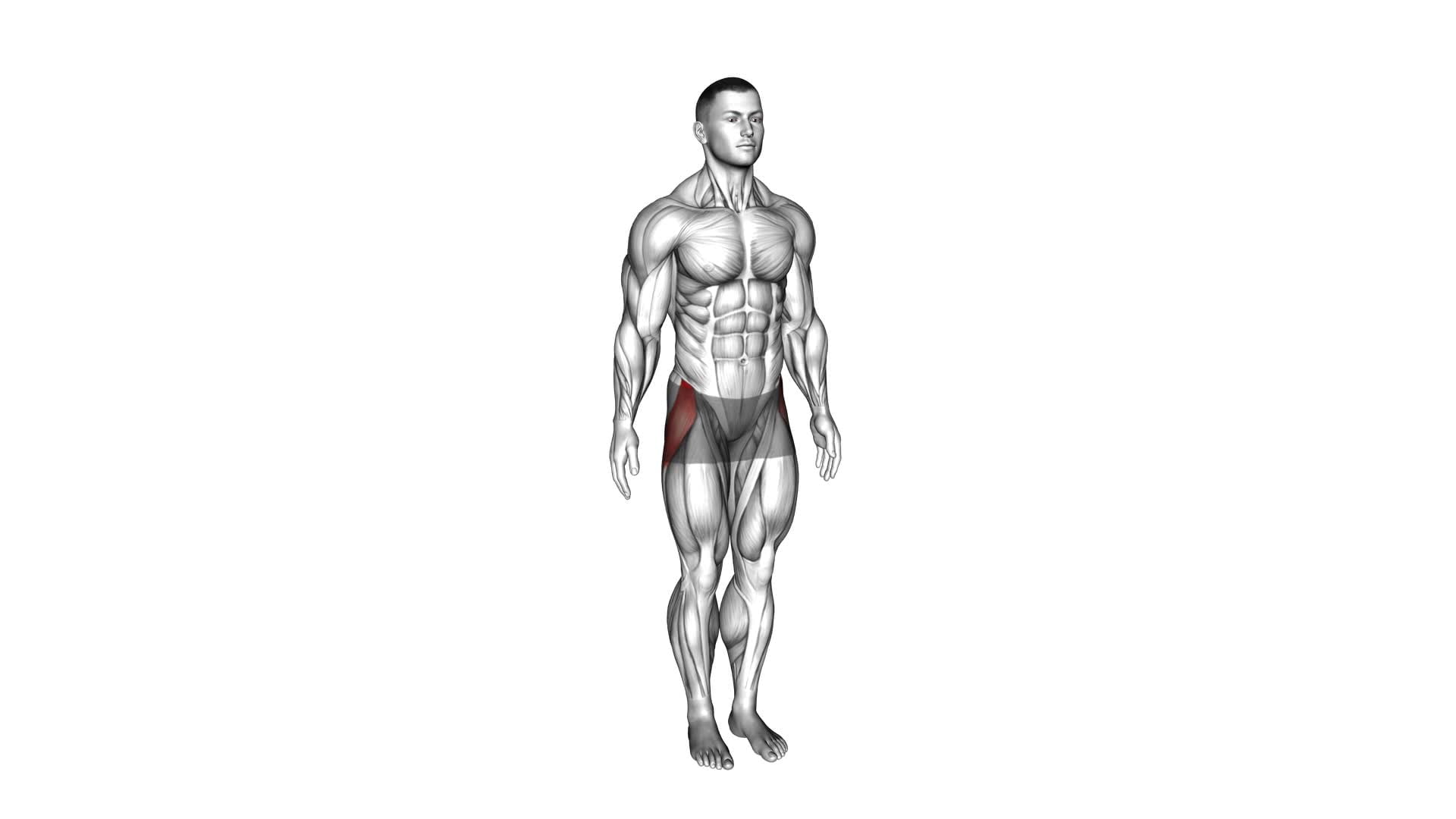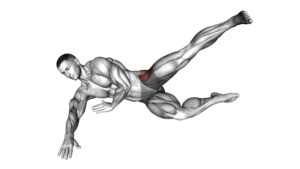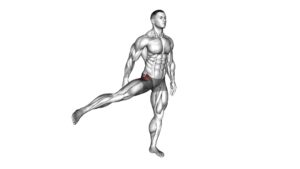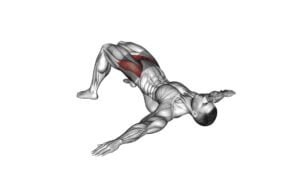Hip – Abduction – Video Exercise Guide & Tips

Looking to strengthen your hip muscles? Our Hip Abduction Exercise Guide is just what you need.
Watch This Exercise Video
With easy-to-follow video tutorials and expert tips, you'll learn the proper form and technique for effective hip abduction exercises.
Whether you're a beginner or advanced, we've got exercises to suit your level.
So grab your mat and let's get started on sculpting those hips!
Key Takeaways
- Hip abduction exercises strengthen muscles in the hips, thighs, and glutes.
- These exercises improve stability of the lower body and enhance balance and coordination.
- Hip abduction exercises increase power and explosiveness for sports.
- These exercises aid in injury prevention and improve posture.
Benefits of Hip Abduction Exercises
Discover the 5 key benefits of hip abduction exercises for improving your overall lower body strength and stability. Hip abduction exercises are an essential component of any lower body workout routine. Not only do they help in injury prevention, but they also play a crucial role in improving your athletic performance. By incorporating hip abduction exercises into your training regimen, you can reap the following benefits:
Firstly, hip abduction exercises strengthen the muscles in your hips, thighs, and glutes, which in turn enhances the stability of your lower body. This increased stability can prevent injuries, such as sprains and strains, by improving the alignment and mechanics of your hip joint.
Secondly, these exercises help to develop better balance and coordination. By isolating the muscles responsible for hip abduction, you can improve your ability to control your movements and maintain proper form during various activities, such as running, jumping, and cutting.
Additionally, hip abduction exercises can enhance your athletic performance by increasing power and explosiveness. The muscles targeted in these exercises are crucial for generating force in movements like lateral lunges, side steps, and lateral jumps, which are essential in sports like basketball, soccer, and tennis.
Moreover, hip abduction exercises can aid in injury prevention by strengthening the oft-neglected muscles on the outside of your hips. Weakness in these muscles can contribute to common overuse injuries, such as iliotibial band syndrome and patellofemoral pain syndrome.
Lastly, hip abduction exercises can improve your overall posture and alignment. By strengthening the muscles responsible for maintaining proper pelvic alignment, these exercises can help alleviate lower back pain and improve your overall posture.
Proper Form and Technique
To perform hip abduction exercises with proper form and technique, you need to focus on engaging the targeted muscles and maintaining correct alignment throughout the movement. Here are some key points to keep in mind:
- Start with proper positioning: Stand tall with your feet shoulder-width apart. Keep your spine straight and your core engaged. This will ensure that you're in the correct starting position for the exercise.
- Engage your glutes: Before beginning the movement, make sure to activate your glute muscles. This will help you to isolate and target the correct muscles during the exercise.
- Control the movement: Slowly lift your leg out to the side, keeping your toes pointing forward. Avoid any swinging or jerking motions. Focus on using the muscles in your hip to control the movement.
- Maintain proper alignment: Throughout the exercise, it's important to keep your body in the correct alignment. Avoid leaning or tilting to one side. This will help to prevent any strain or injury to your hips or lower back.
Common mistakes to avoid:
- Using momentum: Avoid using momentum to lift your leg. Focus on using your muscles to perform the movement.
- Allowing your hips to rotate: Keep your hips facing forward throughout the exercise to properly target the hip abductor muscles.
Hip abduction variations to try:
- Resistance band hip abductions: Incorporate a resistance band around your ankles to increase the intensity of the exercise.
- Side-lying hip abductions: Lie on your side and lift your top leg up and down, focusing on engaging your hip muscles.
Beginner Hip Abduction Exercises
To perform beginner hip abduction exercises with proper form and technique, focus on engaging your targeted muscles and maintaining correct alignment throughout the movement. The beginner hip abduction workout is designed to strengthen the muscles in your hips, particularly the gluteus medius and minimus. These exercises can help improve your balance, stability, and overall lower body strength.
One common mistake in hip abduction exercises is using too much momentum. It's important to perform the movement slowly and with control, ensuring that your muscles are doing the work rather than relying on momentum to lift your leg. Another common mistake isn't maintaining proper alignment. Make sure to keep your body in a straight line, avoiding any excessive leaning or twisting.
A great beginner exercise for hip abduction is the side-lying leg lift. Start by lying on your side with your legs straight and stacked on top of each other. Engage your core and lift your top leg as high as you can without rotating your hips or leaning backward. Hold for a moment at the top, then slowly lower your leg back down. Repeat on the other side.
Intermediate Hip Abduction Exercises
For intermediate hip abduction exercises, incorporate additional resistance to challenge your muscles and further enhance their strength and stability. Here are some variations to try:
- Resistance Band Hip Abduction: Attach a resistance band around your ankles and stand with your feet hip-width apart. Slowly lift one leg out to the side, maintaining tension on the band. Return to the starting position and repeat on the other side.
- Side Plank with Leg Lift: Begin in a side plank position, with your elbow directly under your shoulder. Lift your top leg as high as you can without rotating your hips. Lower it back down and repeat on the other side.
- Single-Leg Squat with Abduction: Stand with your feet hip-width apart and lift one leg slightly off the ground. Lower into a squat position while simultaneously lifting your lifted leg out to the side. Return to the starting position and repeat on the other side.
- Standing Cable Hip Abduction: Attach a cable machine to your ankle and stand facing away from the machine. Lift your leg out to the side against the resistance of the cable. Slowly return to the starting position and repeat on the other side.
Avoid these common mistakes in hip abduction exercises:
- Using momentum instead of controlled movements.
- Allowing your torso to lean or twist.
- Raising your leg too high and compromising form.
- Neglecting to engage your core muscles for stability.
Remember to start with a weight or resistance level that challenges you but still allows for proper form. As you progress, gradually increase the resistance to continue challenging your muscles.
Advanced Hip Abduction Exercises
Now let's take your hip abduction exercises to the next level with advanced variations. These advanced hip abduction exercises are designed to challenge your muscles even further and help you progress in your hip abduction training.
One advanced variation you can try is the lateral band walk with resistance. To perform this exercise, place a resistance band around your ankles and assume a hip-width stance. Take small steps to the side while maintaining tension on the band. This exercise targets your hip abductors, specifically the gluteus medius and minimus muscles.
Another advanced variation is the side plank with leg lift. Begin by lying on your side and propping yourself up on your forearm. Lift your top leg while keeping your core engaged and your body in a straight line. This exercise not only engages your hip abductors but also challenges your core stability.
Incorporating these advanced hip abduction variations into your routine will help enhance your strength, stability, and overall hip function. Remember to always maintain proper form and listen to your body to prevent injury. Keep pushing yourself and enjoy the progress you'll make in your hip abduction training.
Frequently Asked Questions
Can Hip Abduction Exercises Help Improve My Balance and Stability?
Yes, hip abduction exercises can definitely help improve your balance and stability.
By targeting the muscles responsible for hip abduction, such as the gluteus medius and minimus, these exercises enhance your ability to maintain equilibrium and control your body's movements.
Athletes particularly benefit from hip abduction exercises as they require strong stability for optimal performance.
Incorporating these exercises into your training routine can improve your overall athletic performance and reduce the risk of injuries related to balance and stability.
Are There Any Modifications or Variations of Hip Abduction Exercises for Individuals With Knee Pain or Injuries?
If you're experiencing knee pain or injuries, there are modifications and variations you can make to hip abduction exercises. These modifications can help reduce stress on your knees while still targeting the hip muscles.
By adjusting the range of motion or using resistance bands, you can still reap the benefits of hip abduction exercises without exacerbating your knee issues.
Athletes can benefit from hip abduction exercises as they improve hip stability and strength, which can enhance performance and prevent injuries.
How Often Should I Incorporate Hip Abduction Exercises Into My Workout Routine?
To maximize the benefits of hip abduction exercises, it's important to incorporate them into your workout routine regularly. By regularly incorporating these exercises, you can improve hip strength, stability, and overall lower body function. Aim to perform hip abduction exercises at least 2-3 times per week.
Start with 2-3 sets of 10-15 repetitions and gradually increase the intensity and volume as your strength improves. Remember to always listen to your body and consult with a professional if you experience any pain or discomfort.
Can Hip Abduction Exercises Help Alleviate Lower Back Pain or Discomfort?
Hip abduction exercises can be beneficial in alleviating lower back pain or discomfort. By strengthening the glutes, these exercises help stabilize the pelvis and improve overall hip function. This can reduce the strain on the lower back and provide relief from pain.
Additionally, hip abduction exercises are also effective in improving athletic performance, as they target the muscles responsible for lateral movement and stability.
Incorporating these exercises into your routine can have multiple benefits for your body.
Are There Any Precautions or Contraindications for Performing Hip Abduction Exercises?
When performing hip abduction exercises, there are important precautions and contraindications to keep in mind.
Precautions include:
- Avoiding excessive range of motion
- Maintaining proper form
- Using appropriate resistance
It's also important to listen to your body and stop if you experience any pain or discomfort.
Contraindications for hip abduction exercises may include:
- Acute injuries, such as muscle strains or tears
- Chronic conditions that affect the hip joint
Consulting with a healthcare professional is recommended to determine if these exercises are suitable for you.
Conclusion
In conclusion, incorporating hip abduction exercises into your workout routine can greatly benefit your overall hip strength, stability, and flexibility.
By maintaining proper form and technique, you can effectively target the muscles surrounding your hips and improve your athletic performance.
Whether you're a beginner, intermediate, or advanced exerciser, there are a variety of exercises available to challenge and progress your hip abduction strength.
So, get started today and reap the numerous benefits these exercises have to offer.

Author
Years ago, the spark of my life’s passion ignited in my mind the moment I stepped into the local gym for the first time. The inaugural bead of perspiration, the initial endeavor, the very first surge of endorphins, and a sense of pride that washed over me post-workout marked the beginning of my deep-seated interest in strength sports, fitness, and sports nutrition. This very curiosity blossomed rapidly into a profound fascination, propelling me to earn a Master’s degree in Physical Education from the Academy of Physical Education in Krakow, followed by a Sports Manager diploma from the Jagiellonian University. My journey of growth led me to gain more specialized qualifications, such as being a certified personal trainer with a focus on sports dietetics, a lifeguard, and an instructor for wellness and corrective gymnastics. Theoretical knowledge paired seamlessly with practical experience, reinforcing my belief that the transformation of individuals under my guidance was also a reflection of my personal growth. This belief holds true even today. Each day, I strive to push the boundaries and explore new realms. These realms gently elevate me to greater heights. The unique combination of passion for my field and the continuous quest for growth fuels my drive to break new ground.







